L11 Opioid Analgesics & Antagonists Drugs of abuse
一、Opioid Analgesics & Antagonists
Pain
Acute pain:
- Identified event, resolves days–weeks Usually nociceptive
Chronic pain:
- Cause often not easily identified, multifactorial
- Indeterminate duration
- Nociceptive and / or neuropathic
- Nociceptive pain: arising from the stimulation of nerve cells
- Neuropathic pain: arising from damage or disease in the nerves themselves
Classification Of Analgesic Drugs:
- NSAID (anti-inflammation)
- Opium alkaloid L
- Local anaesthetic and general anaesthetics
- Other analgesic drugs (carbamazepine, phenytoin, rotundine)
Opium
1. Introduction
juice in the unripe seed pods of the opium poppy, papaver somniferum, “god’s own medicine”
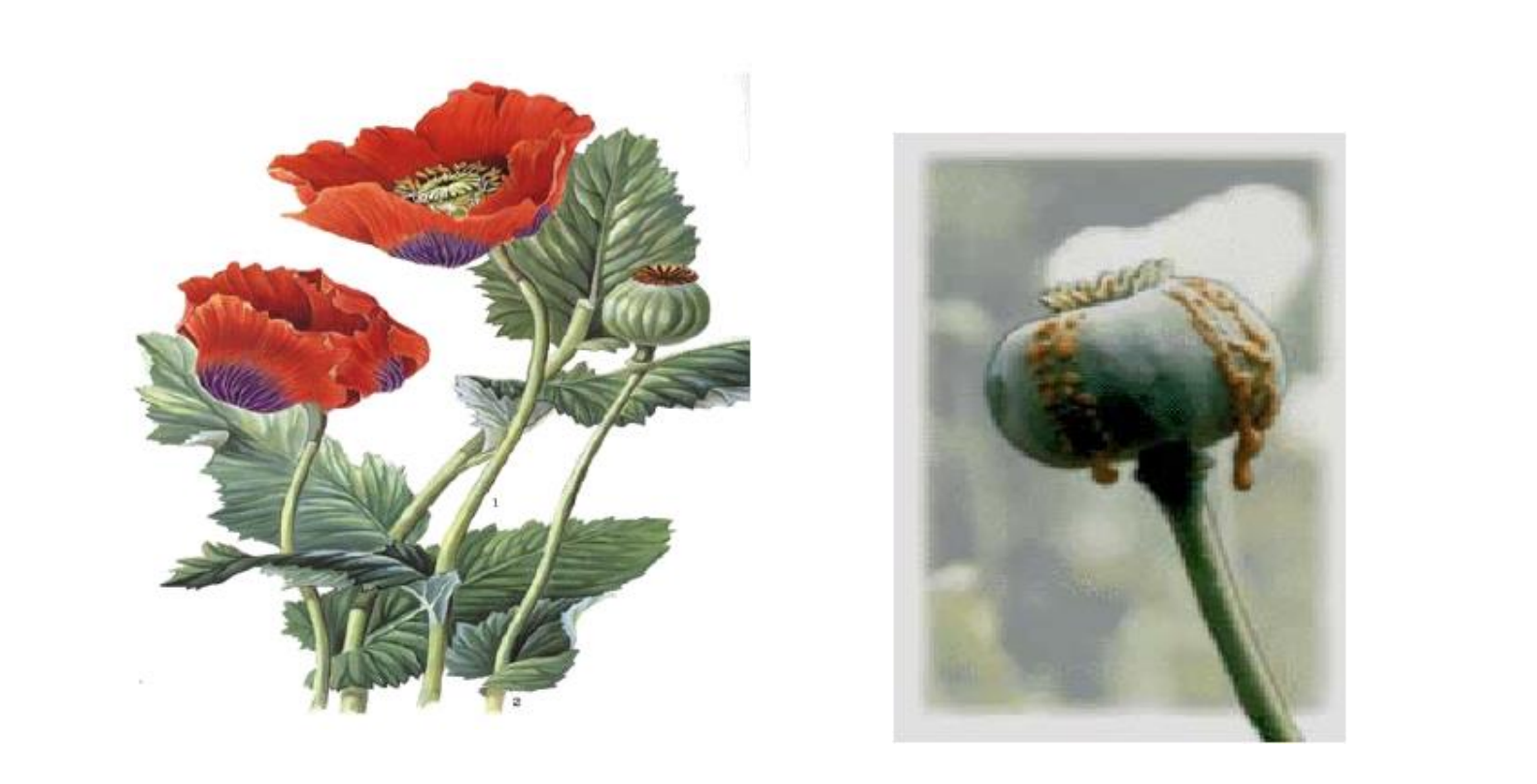
Ingredient of opium (20 alkaloids)
- Morphine, 10%
- Codeine, 0.5%
- Thebaine 0.3‐1.5%(produce convulsions)
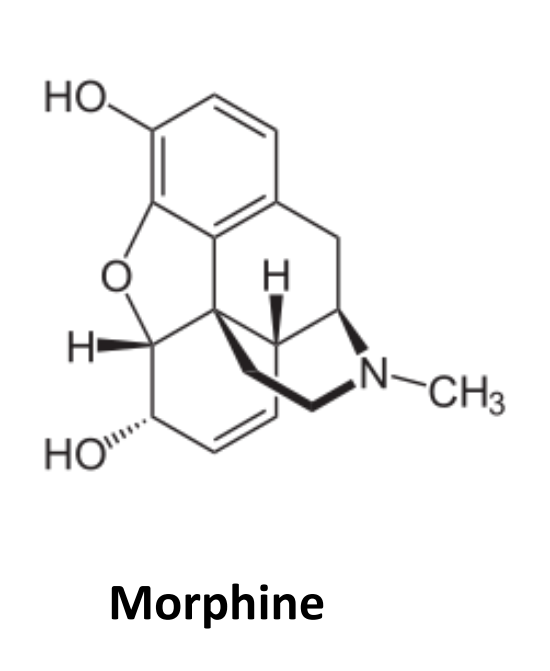
2. Abuse
The history Shouldn’t be forgotten
- Great incursive trade of opium into China in 18~19th century.
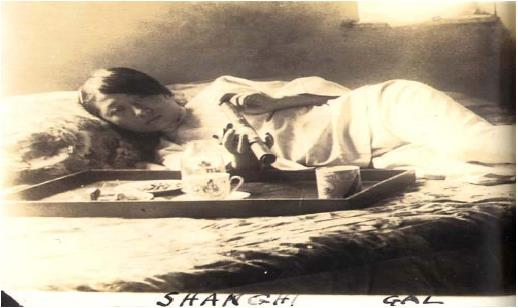
History
- As long ago as 3400 B.C , the opium poppy was cultivated in lower Mesopotamia.
- 460 B.C. the Greek physician,Hippocrates noted its effectiveness as a painkiller
- A.D. 1200 ancient Indian describe the use of opium for diarrhea and sexual debility.
- In 1803, Friedrich Sertuerner of Germany, morphine named it after Morpheus, the god of dreams. a milestone
- Heroin (diacetylmorphine) was first synthesized in 1874 . In 1895, Bayer
- 1962, the analgesic site of morphine is at gray matter around third ventricle in CNS (Gang Zou)
- 1973 morphine receptors were be found (Sol Snyder)
- 1975 endogenous morphine – like peptides, enkephalin
- 1993, opioid receptors were be cloned
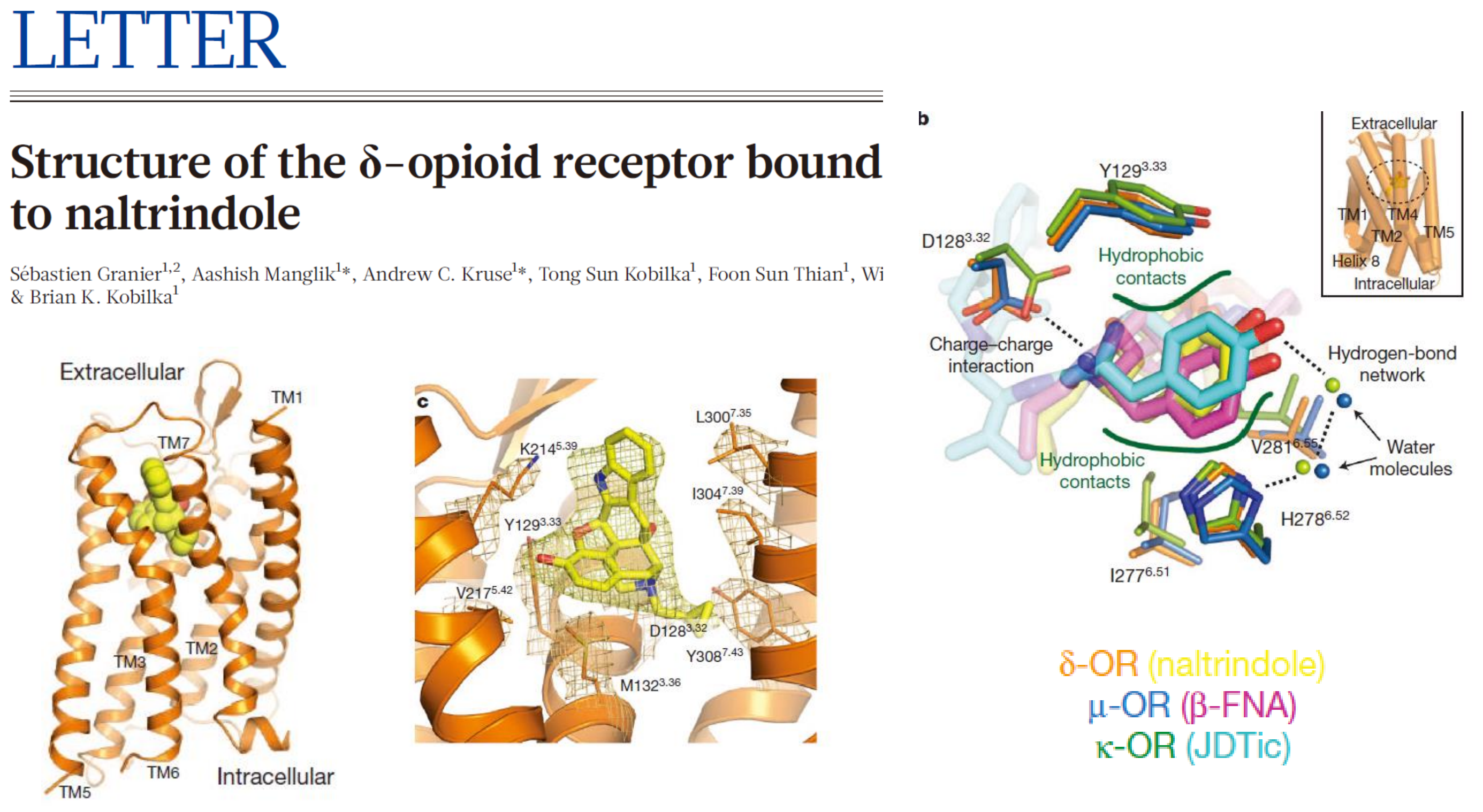
3. Subtypes Of Opioids Receptors
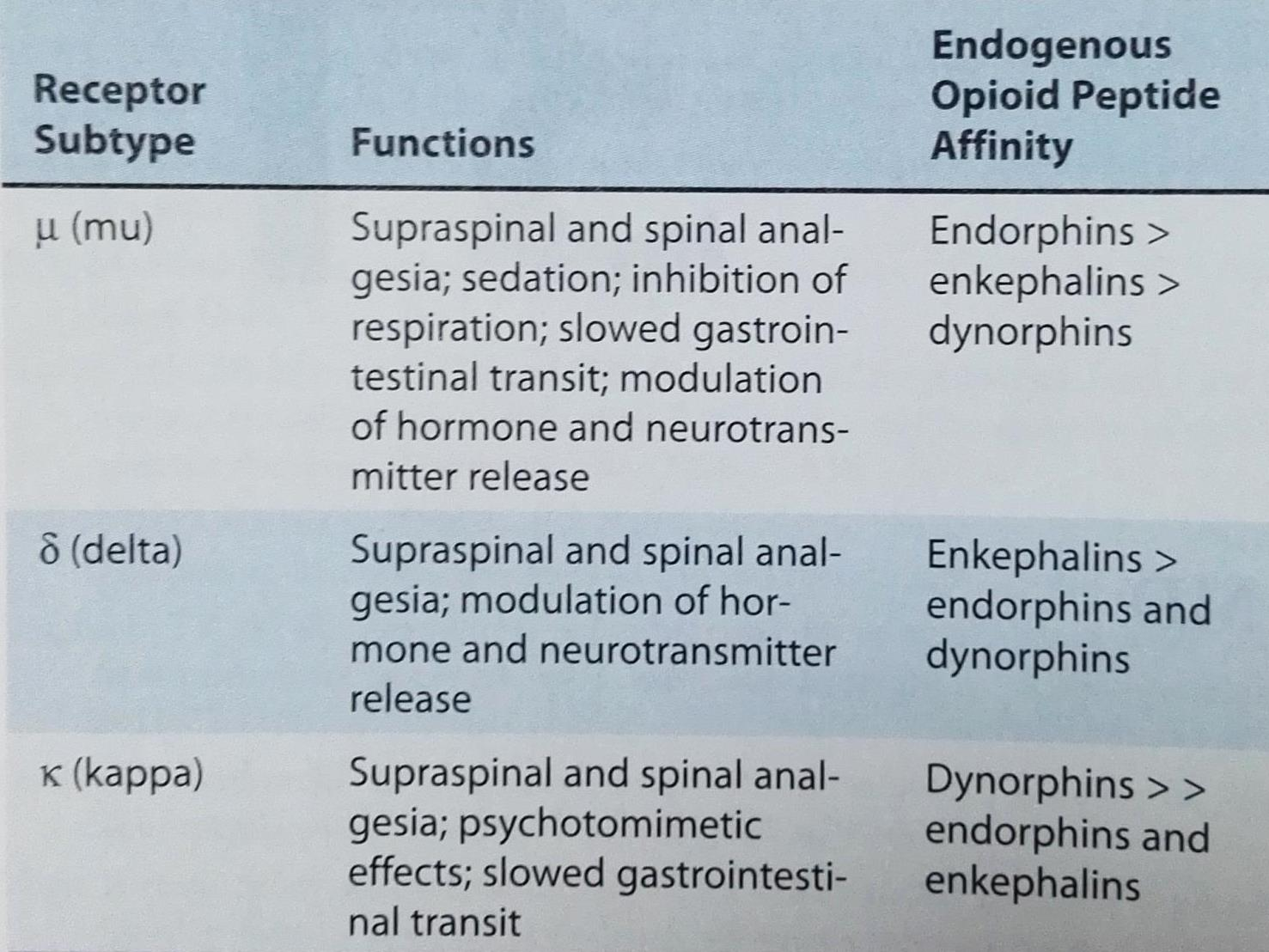
Two types of ligands for Opioid Receptors:
- Small molecules (morphine, heroin)
- peptides (endorphin)
Opioid receptors: Gi coupled receptors
4. Potential Receptor - Mechanisms analgesic Drugs
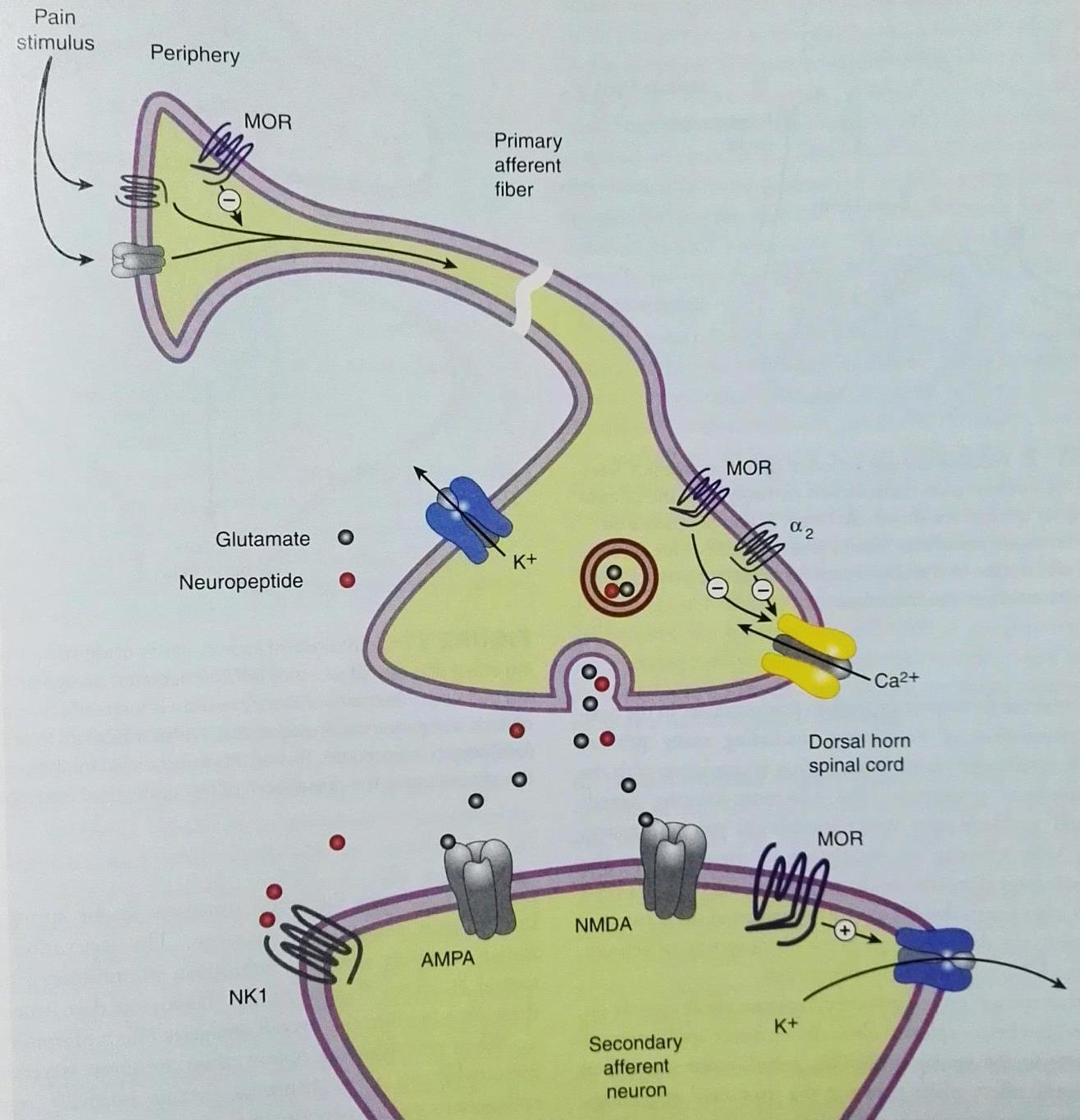
- μ-opioid receptor (MOR)
- Primary afferent neuron originates in the periphery and carries pain signals to the dorsal horn of the spinal cord, where it synapses via glutamate and neuropeptide transmitters with the secondary neuron.
- Pain stimuli can be attenuated in the periphery by opioids acting at μ-opioid receptors (MOR) or blocked in the afferent axon by local anesthetics (not shown).
- Action potentials reaching the dorsal horn can be attenuated at the presynaptic ending by opioids and calcium blockers (ziconotide), by α2 agonists, and possibly, by drugs that increase synaptic concentrations of norepinephrine by blocking reuptake (tapentadol). Opioids can also inhibit the postsynaptic neuron.
Opioids’ site of action
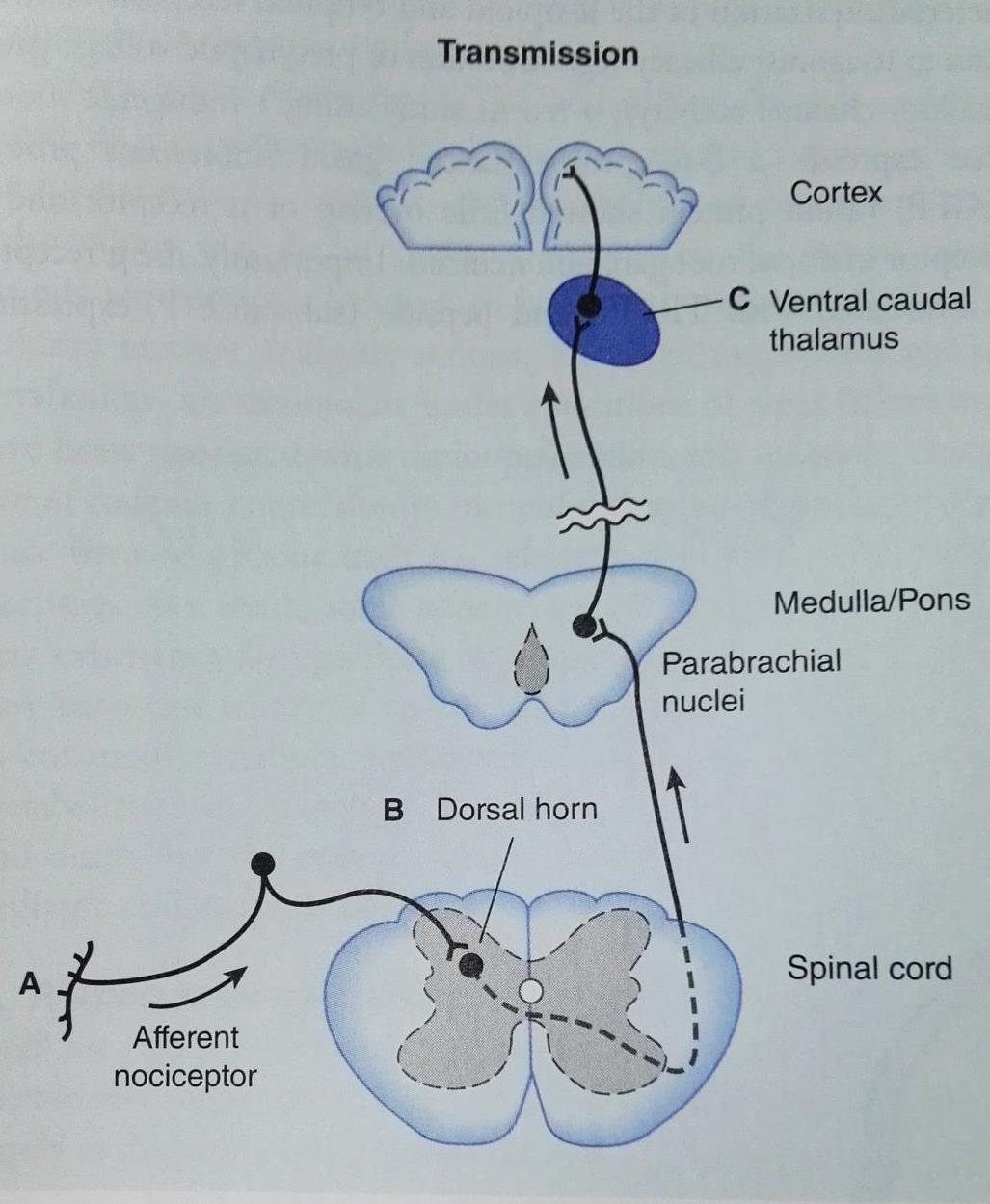
Putative sites of action of opioid analgesics.
- Sites of action on the afferent pain transmission pathway from the periphery to the higher centers are shown.
- A: Direct action of opioids on inflamed or damaged peripheral tissues (see Figure 31–1 for detail).
- B: Inhibition also occurs in the spinal cord (see Figure 31–1).
- C: Possible site of action in the amygdala. ACG, anterior cingulate gyrus; DRG, dorsal root ganglion, VPL, ventral posterolateral nucleus of the thalamus
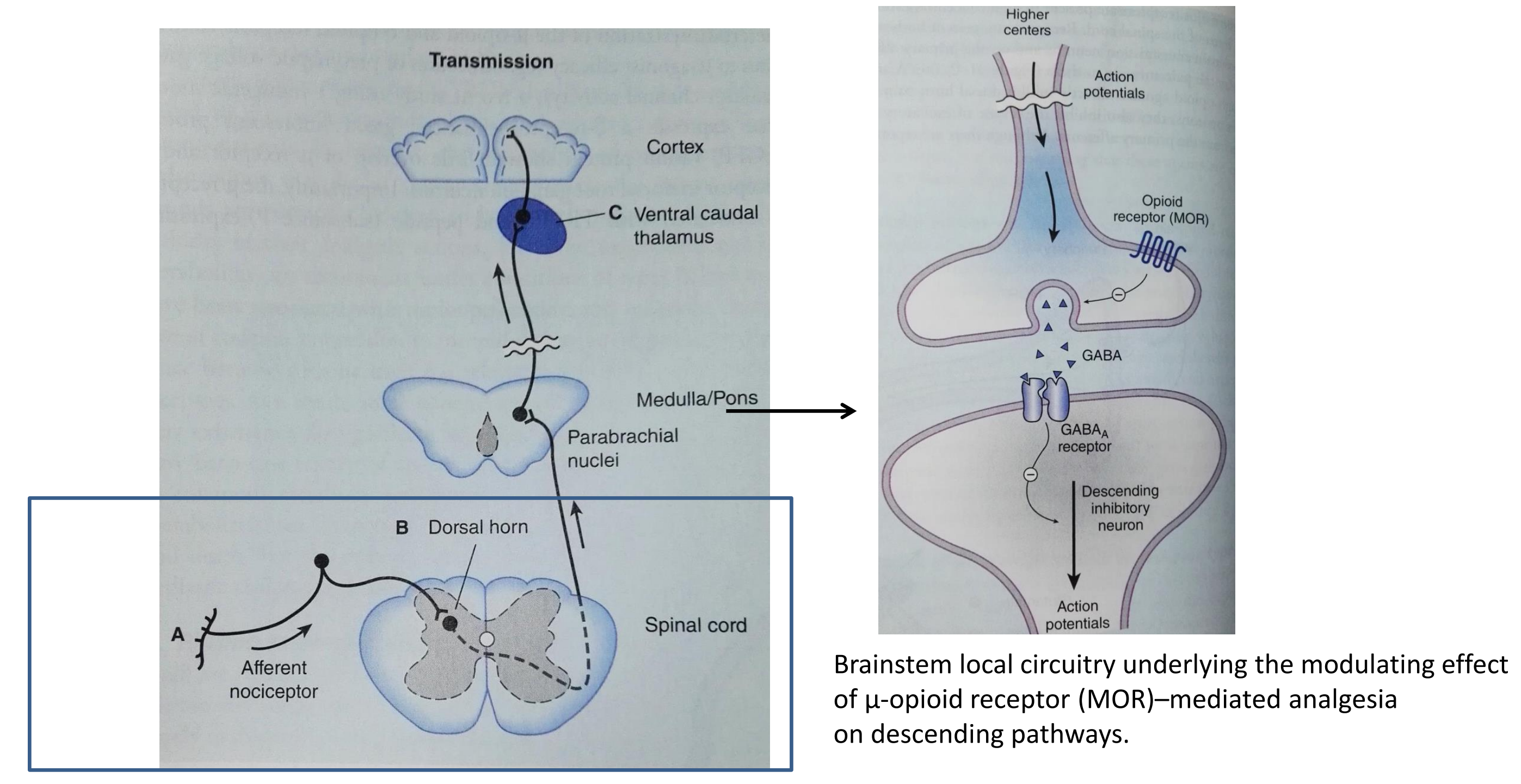
- Brainstem local circuitry underlying the modulating effect of μ-opioid receptor (MOR)–mediated analgesia on descending pathways.

Opioid analgesic action on the descending inhibitory pathway. Sites of action of opioids on pain-modulating neurons in the midbrain and medulla including:
- the midbrain periaqueductal gray area (A)
- rostral ventral medulla (B)
- the locus coeruleus indirectly control pain transmission pathways by enhancing descending inhibition to the dorsal horn (C).
5. pharmacological effects
Effects on CNS
analgesia 镇痛
- Strong ,high selective, with consciouses
- Raising the pain‐threshold, decreaseing pain perception of brain and increase the pain tolerance
- More effective against dull constant pain
Sedative 镇静
euphoria 欣快症
- An exaggerated feeling of physical and emotional well‐being, usually of psychologic origin.
Cough suppression 止咳
Nausea and Emesis 催吐
Respiratory depression 呼吸抑制
- decrease the sensitivity of brain stem respiratory center to CO2.
- frequency of breathing, tidal volume

- The person who take excess of opium drugs
Theraputic application of Morphine
analgesia
- Moderate to Severe constant pain;
- Severe constant pain
- Pain associated with Cancer and other terminal illness. Fixed‐ interval administrition is more effective in achieving pain relief than dosing on demand.
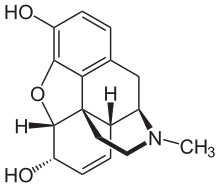
undesired effects
- Respiratory depression, nausea, vomiting, constipation
- Tolerance: large doses are given at short intervals
- Physical dependence
- Failure to continue take the drug results in a characteristic withdrawl include: rhinorrhea(nose running), lacrimation (tear),yawning, chills, gooseflesh, hyperventilation, vomiting, diarrhea, anxiety, and hostility endence: rh
- Psychologic dependence
Other Opioid (Narcotic) Analgesics
Heroin (diacetyl morphine)
- μ-agonist
- Heroin is more lipid soluble than morphine and about 2½ times more potent
- It enters the CNS more readily
- It is a schedule I drug and is not used clinically, but it is a drug of abuse.
Fentanyl
- μ-agonist
- Approximately 80 times more potent than morphine, main use in anesthesia.
- Duration of action very short (t1/2 = 20 min).
- Can be given IM, IV, transdemally or via patient controlled infusion system may be given intrathecally.
- Often used during cardiac surgery because of its negligible effect on the myocardial contractility
Opiate Antagonists
Opiate antagonists have no agonist properties. They are utilized to reverse opiate induced respiratory depression and to prevent drug abuse
Naloxone (Narcan)
- Pure opiate antagonist at all opioid receptors
- Given parenterally -Short duration of action (1-4 h)
- Can precipitate withdrawal in addicts.
Naltrexone
- Oral pure opioid antagonist
- Long duration of action
- Contraindicated in liver disease
- Used in late stages of opioid addiction treatment ( also in treatment of alcoholism).
1. Antagonist of opioid receptors
naloxone
- Affinity to all the 4opioid receptor: μ、κ、δ、σ;
- Without obvious effects if administerd alone
- Addicts, withdrawl
- Repeated injection in relieving severe respiratory depression
- Tool in research.
二、Drugs of abuse
Abused substances are drugs or other materials that are administered repeatedly in a pattern and amount that interferes with the health or normal social and occupational functioning of the individual.
Principle
- Abuse of legal drugs is more prevalent and more costly to society than is the abuse of illegal drugs.
Drug dependence and addiction
- WHO defined: Drug dependence is “a behavior pattern in which the use of a psychoactive drug is given sharply higher priority over other behaviors which once had significantly higher value”
Clarification of terms
Physical dependence is now denoted dependence.
Psychological dependence is more simply called addiction.
Classification of additive drugs based on pharmacology
Drugs that activate Gi/o-coupled receptors
- Opiates
- Cannabinoids (marijuana) binds to CB1 receptors
- Gamma-hydroxybutyric acid (GHB) binds to GABAb receptors, an edogenous compound
- GABA
Breceptors are metabolic receptors
- GABA
- LSD, an alkaloid hallucinogen that binds to the 5-HT2A receptor
Drugs that mediate their effects via ionotropic receptors
- Nicotine: nicotinic acetylcholine receptor
- Alcohol: unknown,several candidate targets
- Ketamine: binds to NMDA receptor
Drugs that bind to transporters of Biogenic amines
- Amphetamines
- Cocaine
All addictive drugs activate the mesolimbic dopamine system, like Dopamine
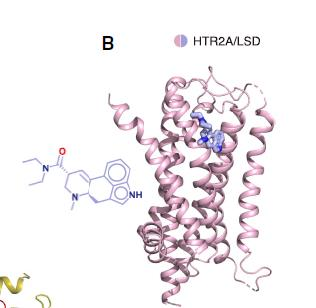
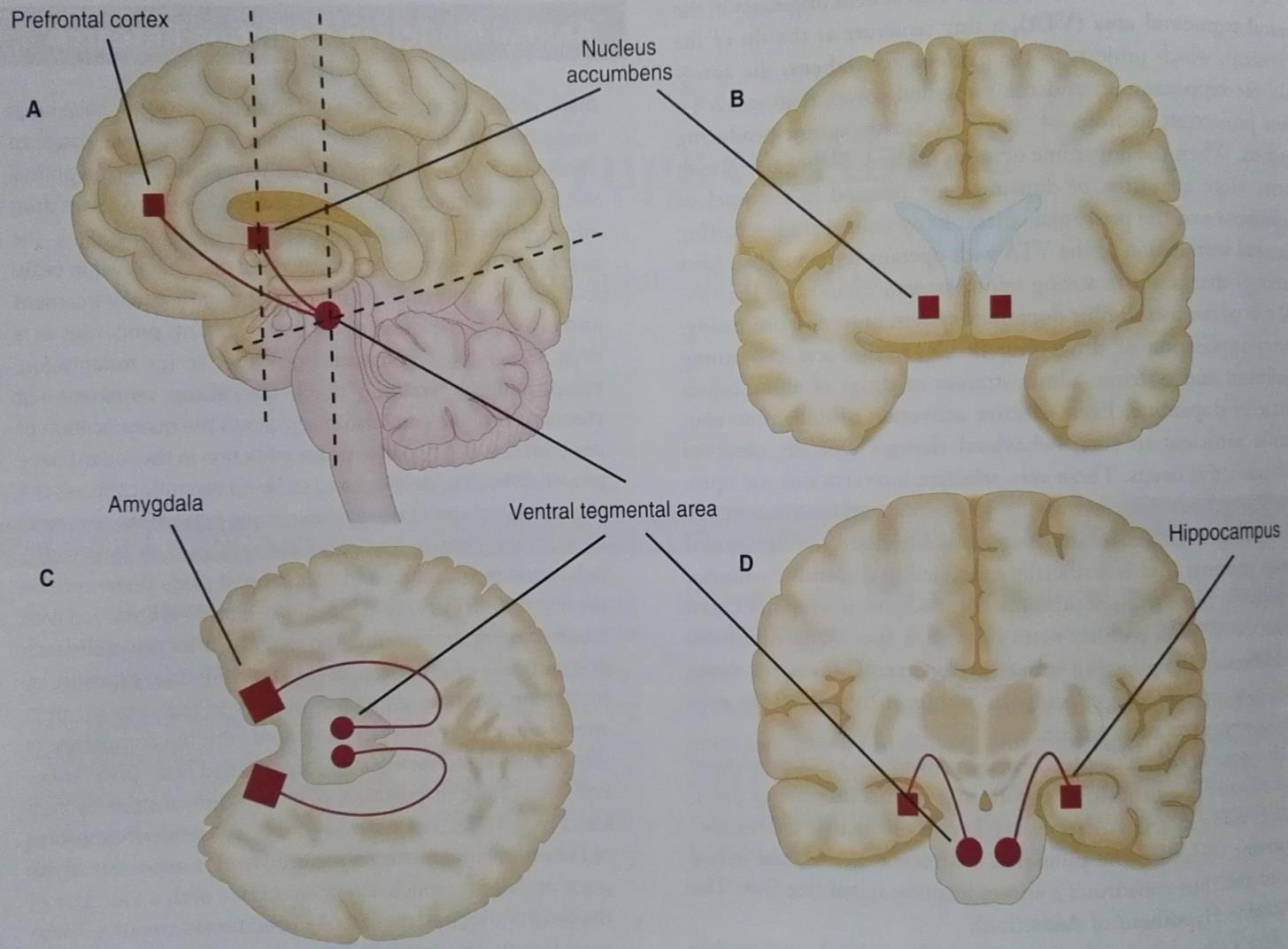
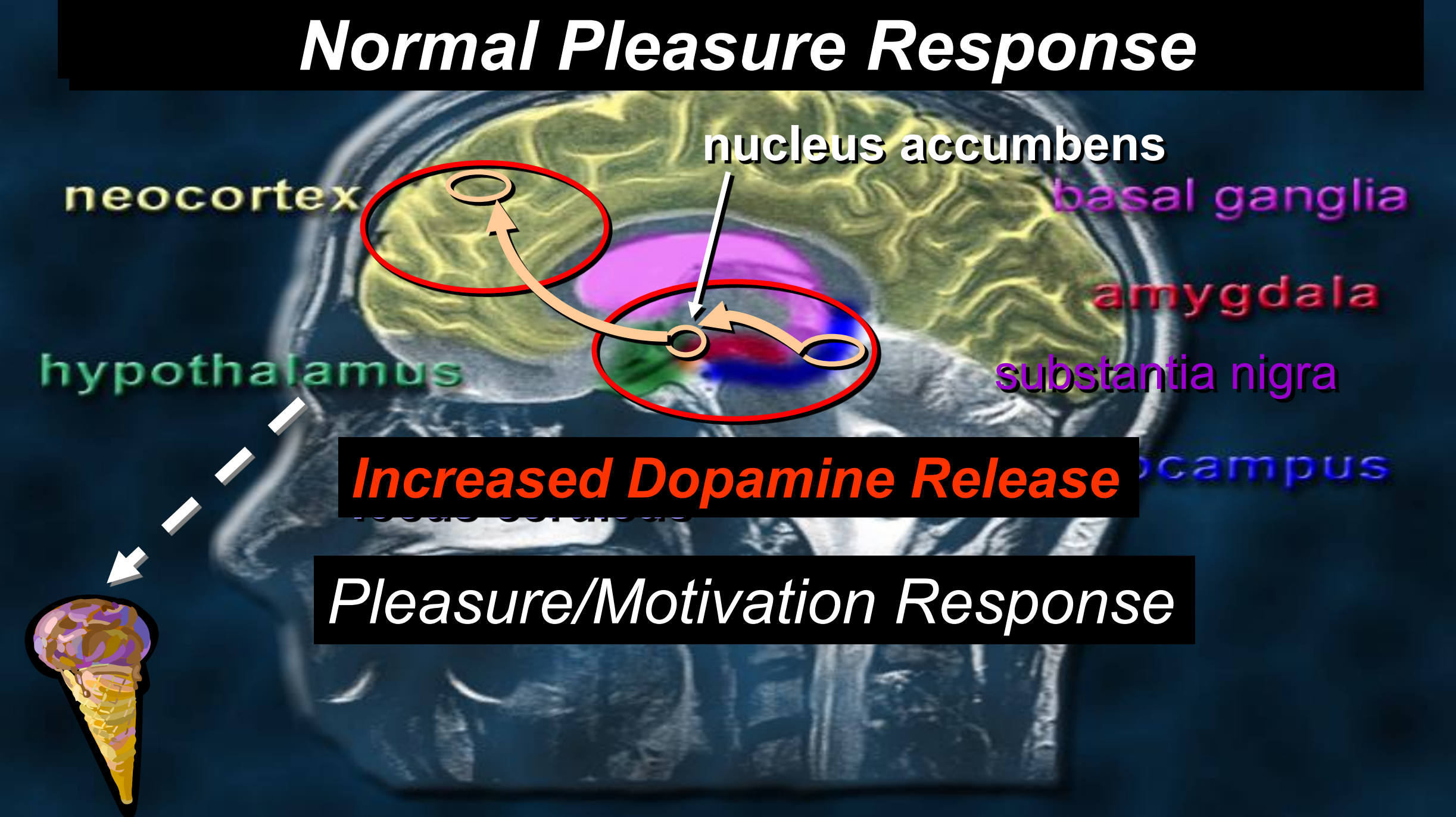

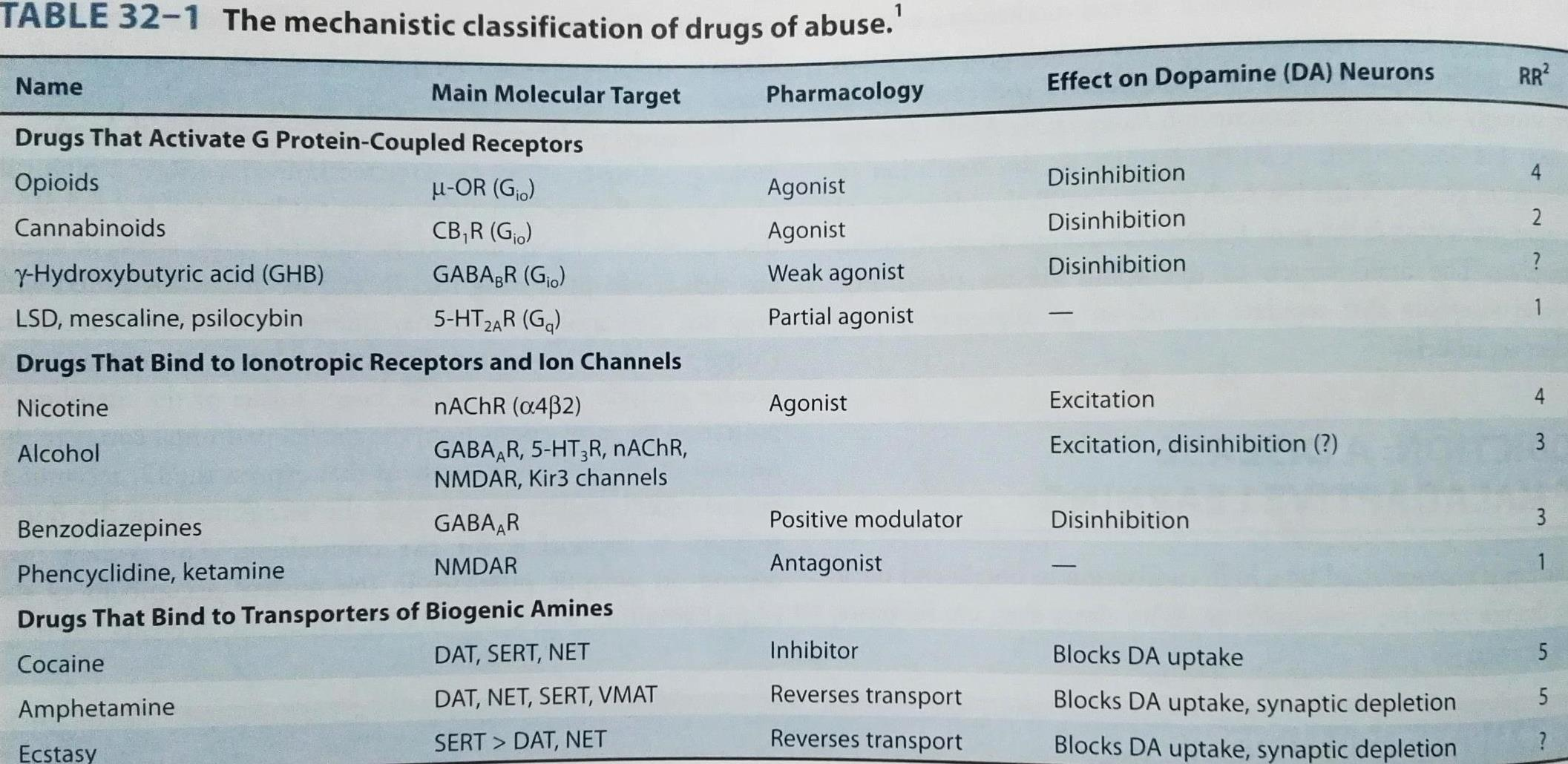
3 main pathways:
- disinhibition;
- excitation;
- blocks DA uptake
Primary targets of additive drugs
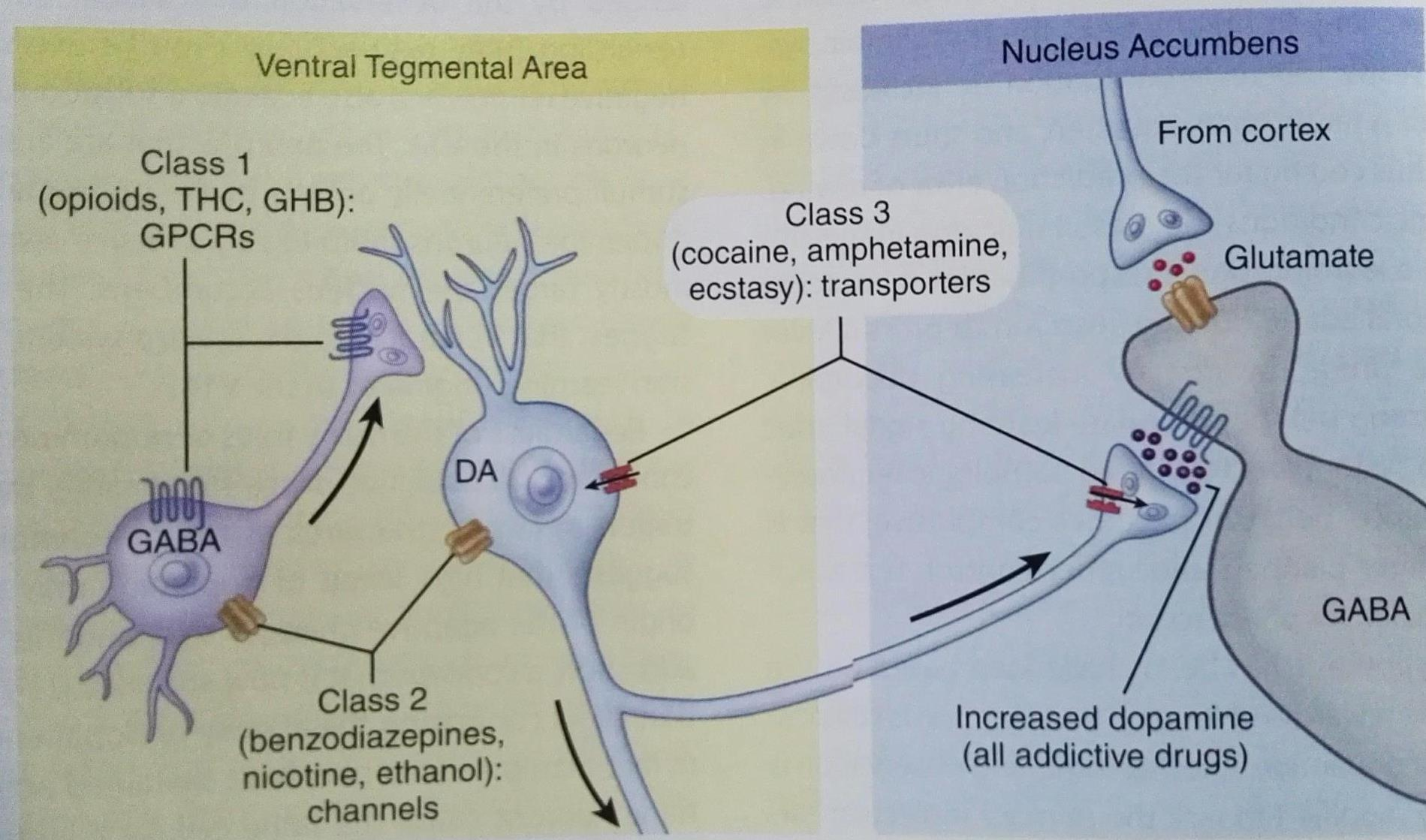
Disinhibition of dopamine neurons via drugs binding to Gi/o-coupled receptors

1. THC
THC (Marijuana) is the MOST ABUSED illicit drug in the United States ,India and China and is considered to be a “Gateway Drug”
Delta 9 ‐ Tetrahydrocannabinol (THC) is the active ingredient that causes the “high”.
THC is psychologically addictive ‐ abuse and addiction is frequently denied.
Marijuana is a psychoactive or mind altering drug
- Psychoactive drugs can produce a mind state similar to psychosis
- Psychosis ‐ A major mental disorder in which the disorganized.
- GABAA is ion channel, GABAB is metabolic receptors
Thc (Three Basic Forms)
- Marijuana Made from the leaves, flowers or stems of the hemp plant
- Hash/Hashish Concentrated form of marijuana by compressing marijuana resins into small blocks.
- Hash Oil Made by soaking marijuana in a chemical solvent (such as rubbing alcohol) and then evaporating the solvent to obtain an oil concentrate
2. GHB
GHB, or Gamma Hydroxylbuteric acid, is a central nervous system (CNS) depressant that sometimes causes hallucinations.
GHB is usually found as a clear liquid with a slightly salty taste, but can also be found as a small tablet or capsule, all of which dissolve quickly in liquid.
GHB usually is sold by capful or teaspoon, also known as a “dose”
3. LSD
LSD is hallucinogenic chemical that is derived from a parasitic fungus that grows on rye
LSD is produced as a crystal, then dissolved in alcohol prior to sale and consumption
LSD users describe their experience with the drug as a “trip”.
How Is LSD Consumed?
- LSD is generally taken orally, either as a pill, a piece of blotter paper (as seen on right), or via liquid dripped onto a sugar cube. LSD can also be absorbed through the users skin.

4. Alcohol
Alcohol is the MOST ABUSED drug by Soldiers.
Alcohol is a Central Nervous System (CNS) depressant
Alcohol is considered to be a gateway drug to other drug use.
A standard alcohol drink is considered to be:
- One 12‐ounce bottle of beer/wine cooler
- One 5‐ounce glass of wine
- 1.5 ounces of 80‐proof distilled spirits.
5. Barbiturates
Barbiturates are prescription sedatives or tranquilizers.
Barbiturates are multi‐colored pills and tablets and are Central Nervous System (CNS) depressants that cause drowsiness.
Barbiturates are also known as:
Barbiturates are most often consumed to get “high”.
Barbiturates can cause:
Barbiturates are prescribed to treat:
- Anxiety
- Depression
- Epliepsy
- Insomnia
- Alcohol and Other Drug (AOD) Withdrawal
6. Ketamine (NMDA inhibitor)
Ketamine, or ketamine hydrochloride, is a Central Nervous System (CNS) Depressant and a dissociative anesthetic, or a drug that separates perception from sensation
Ketamine is used primarily as an anesthetic in veterinary medicine, but is also sometimes used with small children and the elderly.
Ketamine can be found as a clear white liquid or as a white powder
Ketamine Side Effects
- Chronic Depression
- High Blood Pressure
- Muscle Rigidity
- Respiratory Distress
- Paralysis
- Stroke
- Heart Attack
- Death
- “K‐Hole” – Slang for the near‐ death or out‐ of‐body experience that Ketamine causes.
7. Amphetamines and Cocaine
Mecahnism of action of Cocaine and Amphetamine
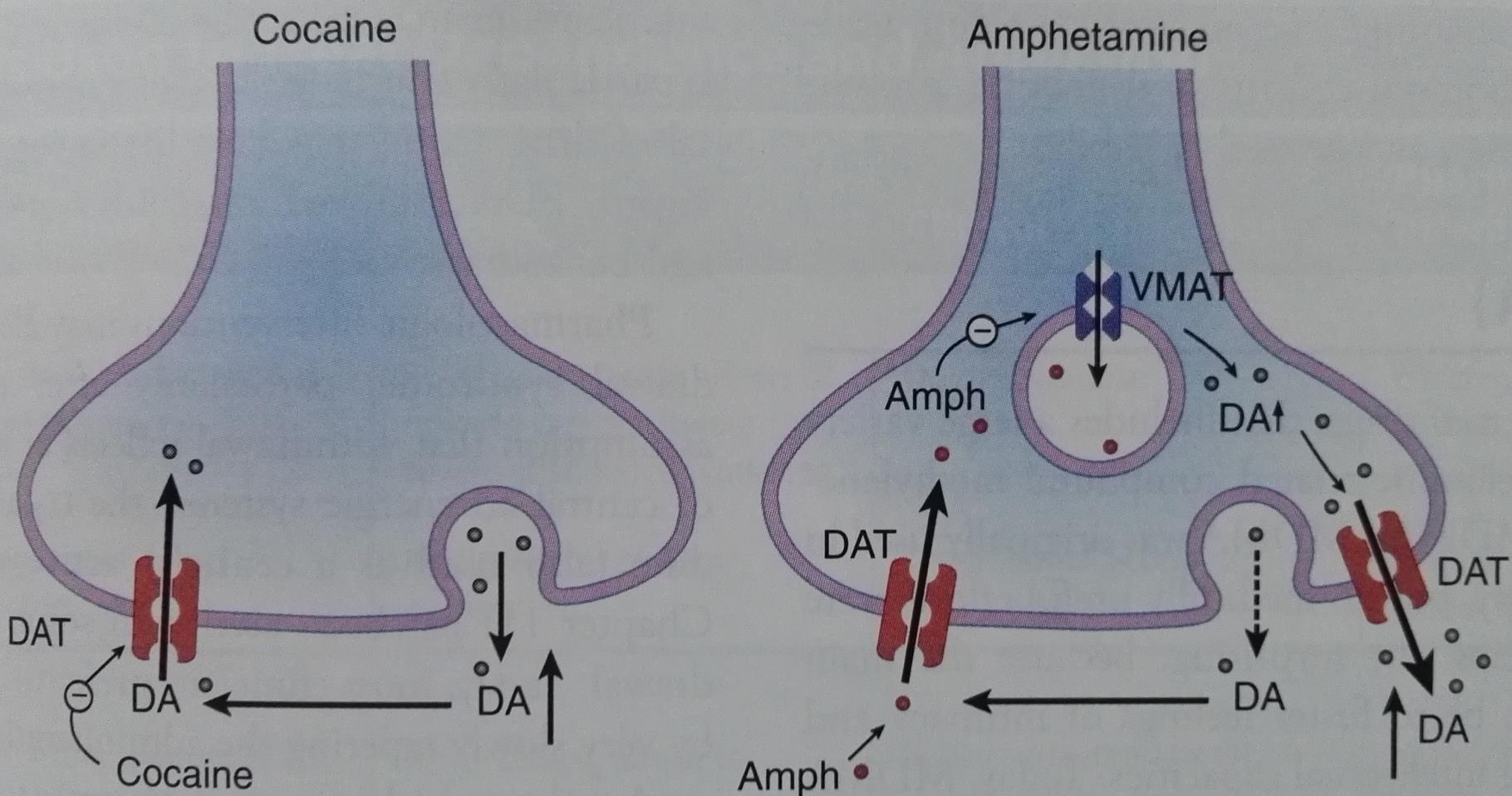
Amphetamines are generally a white or off‐ white powder that can be ingested orally, snorted, or injected.
The side effects of amphetamine abuse can include:

Amphetamines are powerful stimulants that increase activity in the Central Nervous System (CNS), or speed up the way the human body works.
Amphetamines are drugs that induce false feelings of power, strength, self‐assertion and enhanced motivation
Cocaine is a bitter, white, odorless, crystalline drug.
Cocaine is a Schedule II drug and is classified as a CNS stimulant.Cocaine is extracted and refined from the Coca Plant, which is grown primarily in the Andean region of South America.
The side effects of cocaine use can be extremely dangerous:

The level and length of the effects depend on how the drug was induced.


